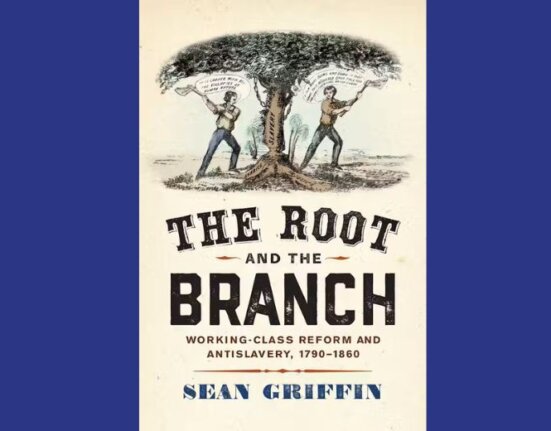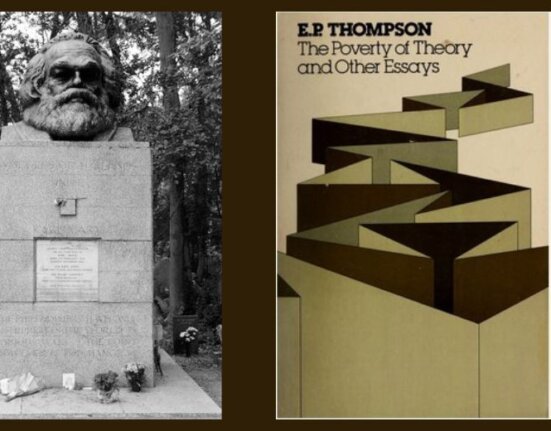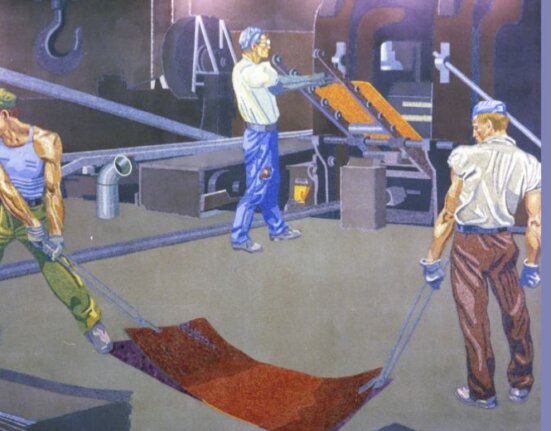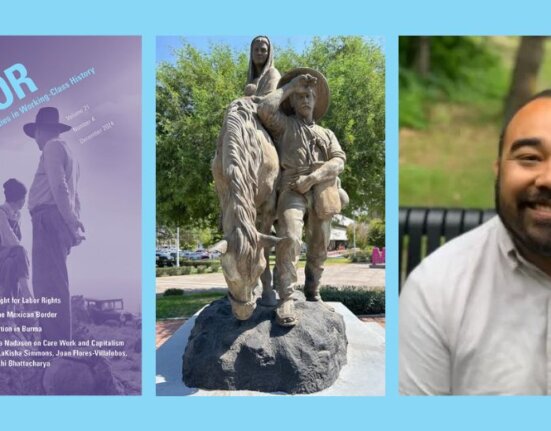In 1937, United Auto Workers Local 174 sponsored the creation of a series of murals to enliven their Union Hall and celebrate their rich, if relatively young, history. The resulting work proved to be one of the most memorable pieces of Detroit’s New Deal-era artwork.
This mural features vignettes from pivotal moments in the union’s history, including the 1936-1937 Flint Sit-Down Strike, the “Battle of the Overpass,” and a painted rendering of Local 174’s first union contract. In the center of the piece, an auto worker holds hands with a female industrial worker who carries the CIO flag, symbolizing the hope of the worker and the solidarity between the two organizations. A unique feature of the mural is the addition of historical union buttons pinned and glued to the breasts of some of the workers. The historical reenactments featured in the painting were modeled directly from photographs, many of which are part of the Reuther Library’s collections. The mural was originally part of a series that explored the history of the modern labor movement, however, other sections not able to be removed from the building were lost when it was demolished in the 1950s. The lost panels highlighted the relationship between agricultural and industrial labor, commemorated important events, such as the Ford Hunger March, and highlighted the role of women in early UAW organizing efforts.

The mural, called Untitled, has long been attributed with having been created through the Work Projects Administration’s Federal Art Project (WPA/FAP), a work relief program that sponsored the creation of public artwork during the Great Depression. It was painted by two WPA/FAP artists: Walter Speck and Barbara Wilson. Speck was an influential member of Detroit’s art scene in the 1930s-1940s. Known primarily as a ceramist, he also created paintings, murals, and lithographs and exhibited both locally and nationally. Much of his career was spent in educational and mentorship roles. He taught at the Detroit School of Art, the Minzinger Art School, and the National Arts Camp at Interlochen. Wilson worked primarily within various New Deal cultural programs and created murals, easel paintings, and illustrations for the FAP, the Federal Emergency Relief Act (FERA), and the Treasury Department’s Section of Fine Arts.
Untitled has a long, transient history. In 1954 the mural was painstakingly removed from its home at 2730 Maybury Grand in Detroit, Michigan and installed in a building located at 6495 West Warren after its former home was razed to make way for a freeway project. The mural stayed in place until 2002 when it was moved to Local 174’s new headquarters in Romulus, Michigan. In 2015, the mural was donated to Wayne State University with the hope that it would be preserved and made available to the public for generations to come. Extensive restoration work, which repaired decades of wear and damage, was made possible through the generous support of members and retirees from UAW West Side Local 174, the Michigan Labor History Society, the Michigan Council for Arts and Cultural Affairs, the National Endowment for the Humanities, and private individuals.
Untitled is available for public viewing in the Reuther Library’s Reading Room (10:00 a.m- 4:00 p.m., Monday-Friday). Please direct any questions or requests for more information to reutherav@wayne.edu







